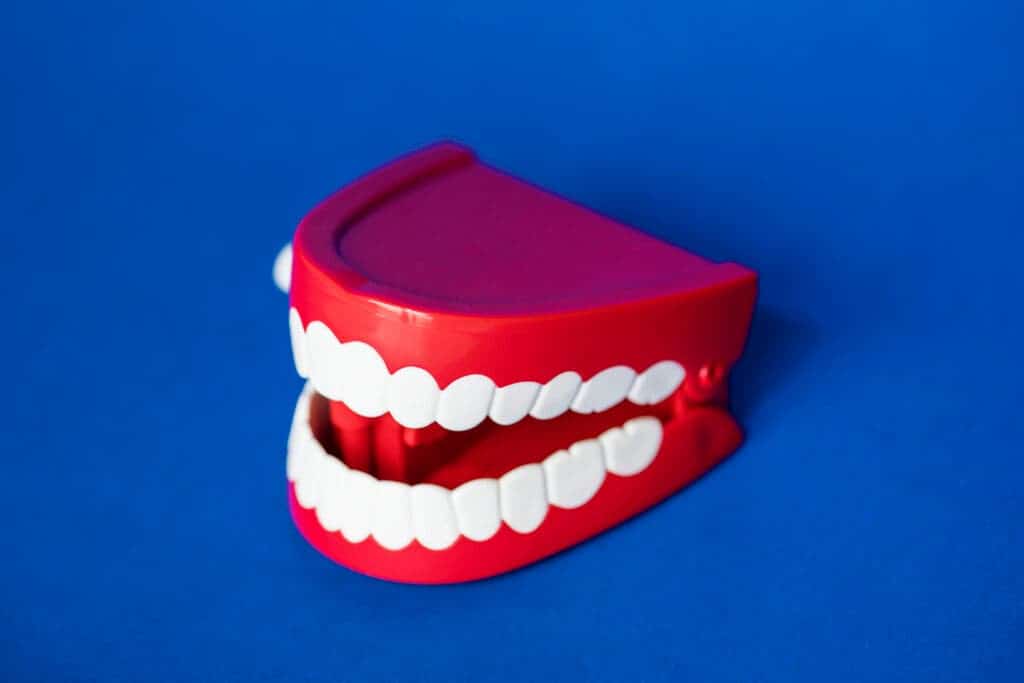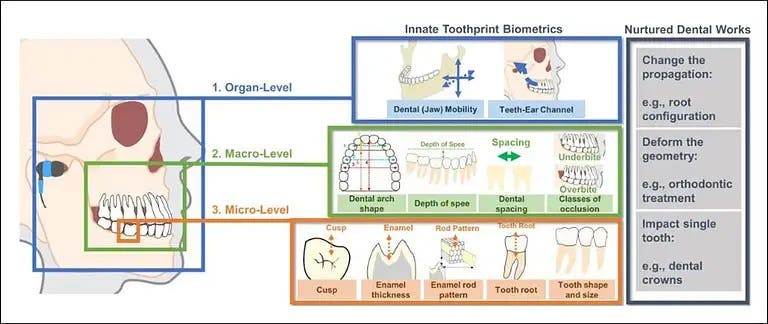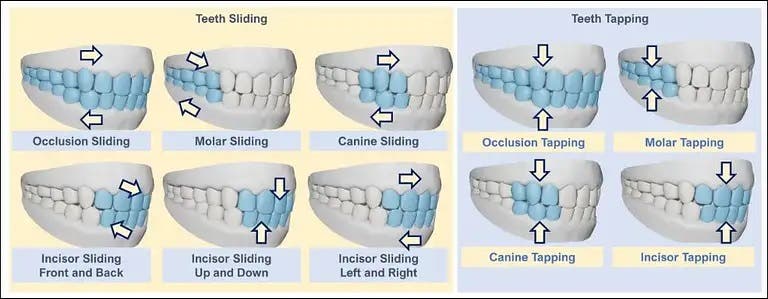Two separate research groups, one in the US, and the other in China, both showed that the sounds we make while grinding our teeth are unique to each person and can be picked up by an in-ear microphone to generate a biometric pass — basically identifying us based on the sounds we make when we grind our teeth.

Although it may sound quirky and silly to unlock a device by grinding your teeth, the researchers make a convincing case that such a biometric profile is safer from intruders and perhaps easier to use than a fingerprint or facial recognition.
Teeth-grinding adiscrete identifier
Dental patterns have long played an important role in human identification in law enforcement and forensics, particularly in some of the most gruesome cases (when a postmortem ID is performed on a body with little to no tissue left).
Like a fingerprint, each person’s teeth have a unique geometry and bite pattern that can be used to identify them. Some of the factors that shape a person’s dentition include occlusion (such as an overbite), enamel density and resonance, missing teeth, and porcelain and metal fillings, among other possible distinguishing features. These differences add up and can even result in one-of-a-kind vibrations when performing a grinding motion of the teeth.
Researchers at Florida State and Rutgers universities developed a system called ToothSonic that leverages this toothprint-like sonic effect by the grinding gesture.
When we grind our teeth, vibrations travel through the skull into the ear canal, where an inward-facing microphone was placed on an “earable” device — in this case, the microphone was placed inside a modified commercial earphone.

T00thSonic then “extracts multi-level acoustic features to reflect the intrinsic toothprint information for authentication,” according to the authors of the new study, which claims an accuracy of 96.8%.
Elsewhere, a collaboration between the Beijing Institute of Technology, Tsinghua University, and Beijing University of Technology in China, working with Temple University in Philadelphia, developed TeethPass. This is a similar system to ToothSonic, which records teeth noise conducted through the skull and ear canal, and uses that information to match an ID using a neural network. Experiments showed TeethPass had an average authentication accuracy of 96.8%.

One might wonder, what’s all this for? There are actually quite a few perks to opting for teeth-grinding biometrics. One would be the advanced and virtually impenetrable protection offered against spoofing. Just think about it: a hacker would have to mimic the architecture of your entire skull, including the mouth and teeth, along with the ear canal, in order to produce a matching biometric key.
While it’s possible to synthesize and mimic a person’s voice, fingerprint, or face, spoofing teeth-grinding is at least an order of magnitude more challenging to do, making this method the least vulnerable to hijacking. Playing a recording of a potential victim’s mastication simply doesn’t work, the Chinese researchers showed in their study, and the attack is easily detected and blocked.
“[The] toothprint-induced sonic waves are captured via the user’s private teeth-ear channel. Our system thus is resistant to advanced mimic and replay attacks as the user’s private teeth-ear channel secures the sonic waves, which are unlikely uncovered by adversaries,”
Toothprint-ID is also private. Apart from the occasional sound, no one will notice you are unlocking a device, as opposed to nudging your finger or awkwardly smiling at the camera. For people with severe motor disabilities, this form of authentification would be ideal.
The ear-worn prototypes that the researchers made either doubled as earphones or were originally regular audio listening devices that had been modified to include a microphone pointing towards the ear canal rather than towards the mouth. In any event, the hardware part isn’t difficult and, in the future, smartphone manufacturers keen on including teeth tapping or grinding as an auth-method could easily supply special headphones.
Other groups are exploring other intriguing new biometric prints. These include VoicePop which recognizes pop noises made when you breath and LipPass, which can identify unique acoustic patterns when a person moves their lips to speak.


